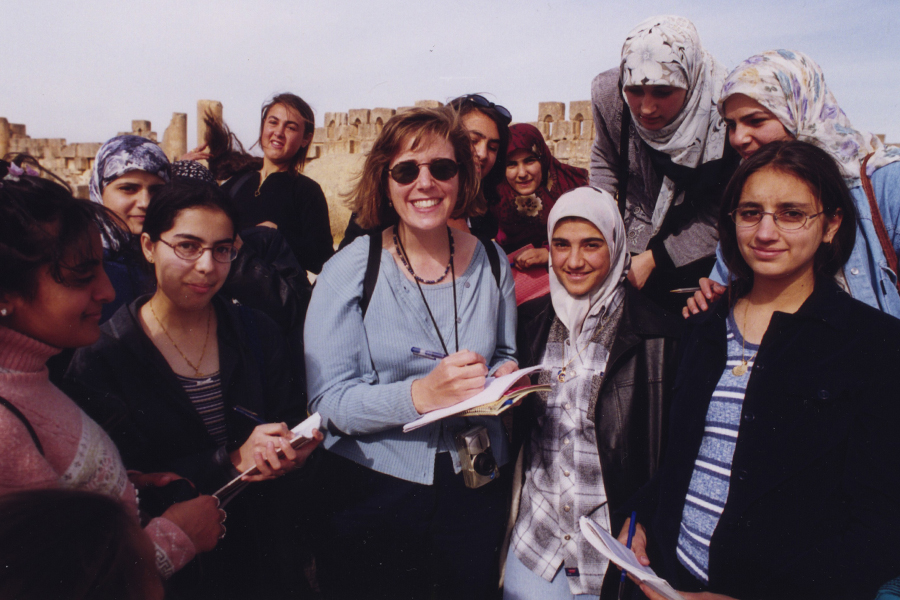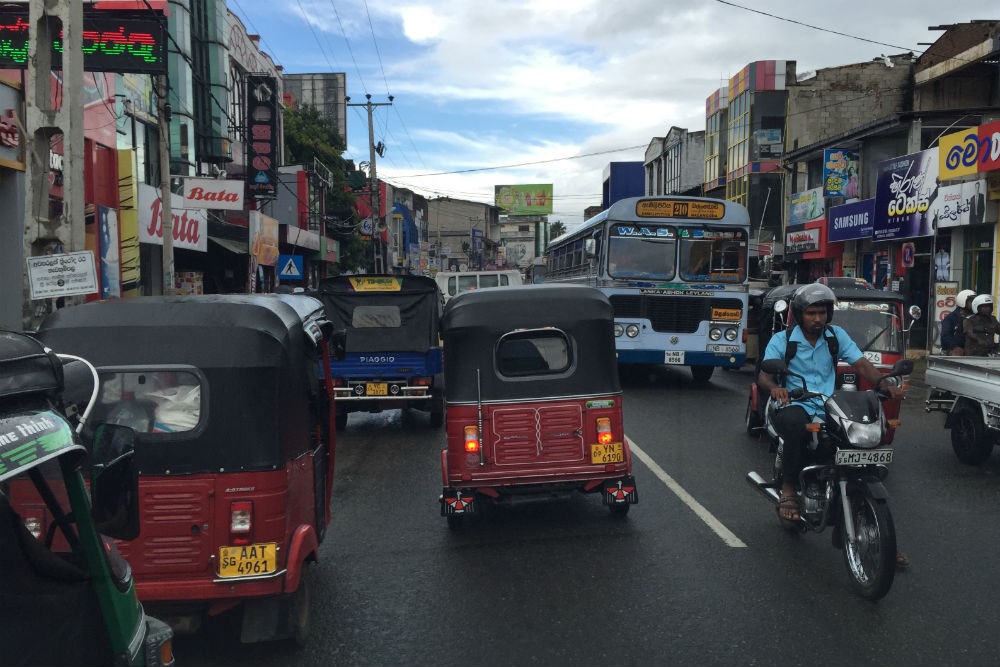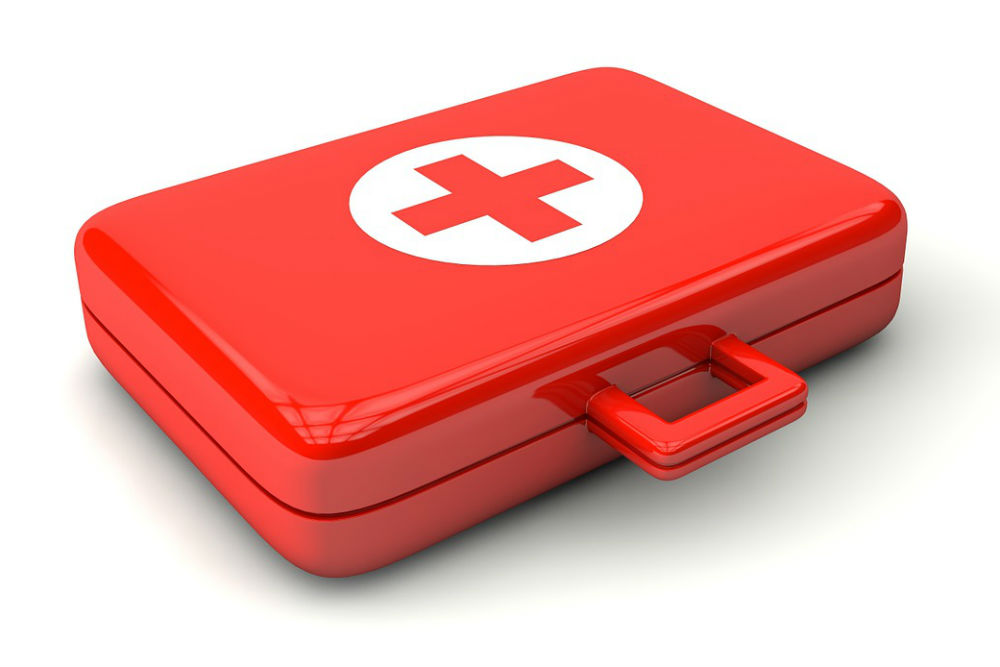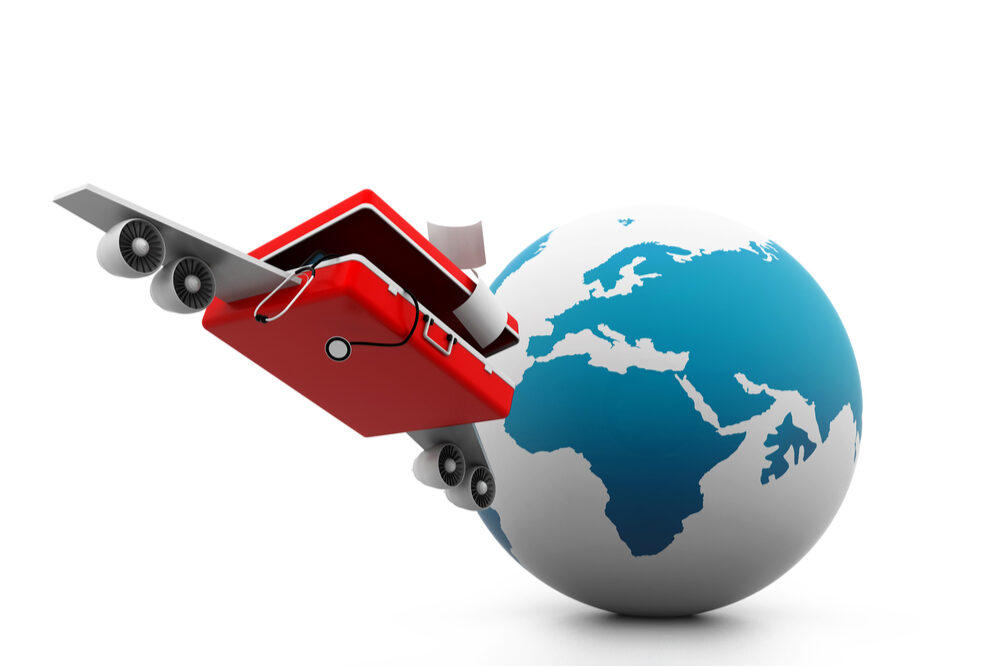The Real Things You Should Be Wary Of When Traveling Abroad (Hint: It’s Not Terrorism)
 Wendy making friends at the ancient Phoenician city of Baalbek in Lebanon.
Wendy making friends at the ancient Phoenician city of Baalbek in Lebanon. Don’t spend so much time focusing on avoiding risks that are highly unlikely—such as a terror attack—that you neglect to take sufficient steps to avoid those risks that are far more likely to ruin a trip abroad—such as a traffic accident, theft, or food poisoning. The following do’s and don’ts that I shared with U.S. News & World Report will take care of most potential problems. A reliable (and reachable) travel planner will take care of the rest.
Drive carefully on your way to the airport.
Renting a car? Remember that motor vehicle accidents are the most common cause of death of Americans overseas.

Traffic rules are different in other countries, and car accidents kill more tourists than terrorist attacks. Be careful crossing the street. Photo: Timothy Baker
Look both ways before crossing the street.
Motor vehicle “rules” in many countries are not what you’re used to back home.
Leave valuables at home.
Most of us have learned to leave fancy jewelry at home, but we now bring all manner of fancy electronics. Consider leaving your larger and more expensive electronics at home. Whatever devices you do pack, be sure that the information in them is password-protected and that you have a copy of that information somewhere safe.
Use your in-room safe.
Store your passport in it. Leave the Do Not Disturb sign on your hotel room door when you’re not in the room.
Use trustworthy Wi-Fi.
I carry my own portable Wi-Fi hotspot rather than logging into free Wi-Fi on the street.
Watch out for scam artists.
In big cities, pickpockets may prey on tourists, especially in crowded transportation hubs. Clothing with internal zippered pockets, or a neck pouch, are a good way to keep cash and credit cards safe as you walk around and sightsee. If you’ll be carrying a handbag, use a cross-body one. A few examples of scam artists:
I was walking in Buenos Aires once—in a good neighborhood, in broad daylight—when suddenly some inky, foul-smelling liquid landed on me and my husband. Two young women sympathetically showed us an outdoor faucet where we could clean it off. Suspicious, we opted to remain a mess and started to walk away—at which point the duo offered Kleenex. They seemed a little too eager to help, so we quickly left the area. Back at our hotel, the concierge immediately guessed which street corner we’d been standing on and confirmed that we had nearly fallen for a common con: Had we put down our bags to clean up, they would have made off with them.
Other traditional scams in certain countries include the handbag snatch (you’re sitting at an outdoor café, you place your handbag on the ground or hang it on your chair, and somebody grabs it and runs off), the fake street fight (boys pretend to beat each other up, one approaches you in tears, pleading for money so he can get home to safety, you pull out your wallet and the kids grab it and race off), the crowded subway car (a group of women and children waltz into your subway car in a distracting whirl of colorful scarves and skirts, remove your wallet from inside your pocket, and exit before the doors close), and even the baby toss (a woman tries to hurriedly hand you an infant—some actually toss you a doll, in hopes that you will instantly drop your bags to catch it. An accomplice then swipes your belongings).
Dress smart.
I wear jackets with internal zippered pockets that nobody else’s hands can reach. Rather than keeping my wallet in a handbag that could be stolen, I keep small bills and credit cards in various pockets, so that I never have to take out my whole wallet. If you must carry your wallet in your outside pants pocket, wrapping rubber bands around it makes it more difficult for a pickpocket to extract it. Don’t wear brand new white sneakers. They’re a dead giveaway that you’re a tourist.
Don’t pull out a map and scrutinize it in a public place.
Step inside a restaurant or shop if you want to check your map.
Think before you photograph someone.
Don’t photograph policemen or anyone who does not want his/her photo taken. Here are some more tips on photo etiquette when you travel.
Program local emergency numbers into your cell phone.
I ask my hotel concierge for those numbers.
Carry your hotel’s business card in the local language.
Have at least one of these so you can show it to non-English-speaking locals (e.g., a taxi driver) and get back to your hotel quickly in an emergency.
Carry a mini-flashlight (so you’re never caught in the dark).
I once made the mistake of not packing one and learned my lesson the hard way. You can read all about my best travel mistake here.
Be a smarter traveler: Use Wendy’s WOW List to plan your next trip. You can also follow her on Facebook and Twitter @wendyperrin, and sign up for her weekly newsletter to stay in the know.












I had a local tailor sew a complete Velcro strip across 1 of my front pants pockets. I still use an under the shirt holder but the pants pocket Velcro makes my daily cash and phone more secure. Don’t do both pockets as if done right they are reasonably hard to undo and you want 1 accessible pocket for non valuables
What is the name of the jacket you wear with the inside zippers?
Love your tips Wendy!!!
Favorite email always!!!